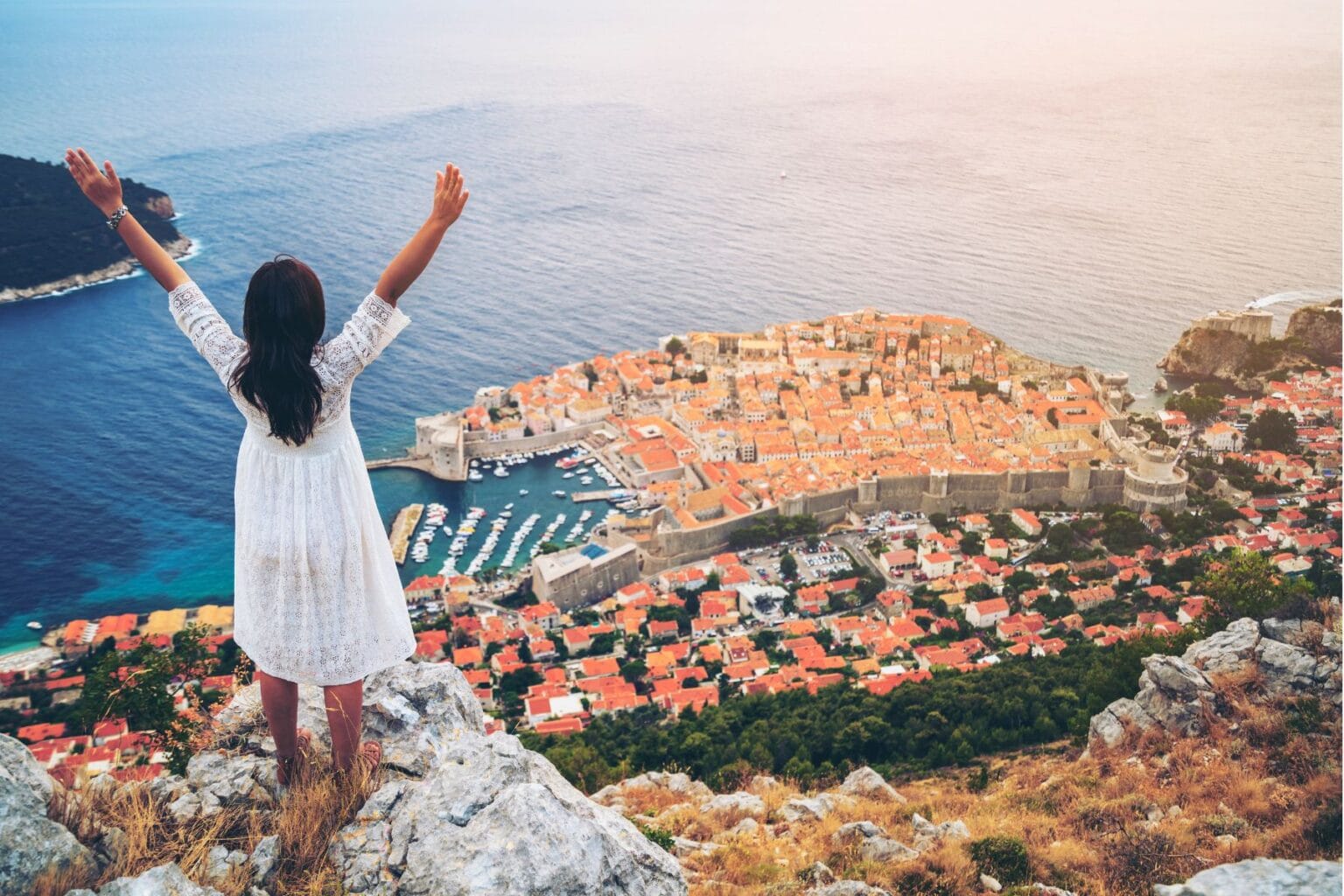Introduction: A Different Kind of Journey
Sometimes, the most unforgettable journeys don’t come from crowded capitals or famous landmarks. They emerge from quiet places—forgotten villages, winding paths, the aroma of earth after rain.
Europe is known for its grandeur. Paris, Rome, Barcelona—these cities shine in every travel brochure. But far from the noise, another Europe waits. One where time moves slower. Where locals know your name after a day. Where the air smells of wild herbs and the night reveals stars most of us have forgotten. This is not just local travel. This is a return to what matters. In this journey, we won’t chase monuments. Instead, we’ll walk dirt roads. Share meals with strangers. Listen to the heartbeat of a land still alive with stories.
Because sometimes, going farther means going deeper. And the best-kept secrets of Europe live off the main road.
Chapter 1: Why Local Travel Matters
It’s easy to forget the joy of simple things. In a world that rewards speed and spectacle, slow local travel feels like rebellion.
But it’s more than that. It’s healing. When you choose a family-run guesthouse over a hotel chain, you support real people. When you spend time in a small village, you help preserve culture. Local travel connects us. Not just to places—but to people. Europe’s soul doesn’t live in brochures. It lives in cheese cellars, forest trails, and dusty church squares where old men play cards.
And in a time when the world feels distant, these local encounters bring us back to ourselves.
Chapter 2: The Forgotten Corners of France
France is more than Paris. Beyond the Eiffel Tower, lavender fields stretch under golden skies. Stone cottages dot the countryside. Life moves gently in villages like Collonges-la-Rouge, where red sandstone glows at sunset. In the Dordogne, ancient caves whisper stories of humans from 17,000 years ago. Markets sell local walnuts, cheese, and wine. And the people—though quiet—offer warmth if you take the time.
Stay in a farmhouse. Wake with roosters. Help bake bread in a clay oven. Here, travel is not about doing, but being. One traveler, Marie, recalls how a storm once knocked out the power. The village lit candles. Strangers gathered. They shared wine and laughter, forgetting for one night that they were from different worlds.
This is the France most never see. And it’s unforgettable.
Chapter 3: Spain Beyond the Coast
Tourists often flock to Spain’s beaches or big cities. But the real magic? It lives in the hills and valleys of its interior. Take La Alberca, a village in Salamanca. Stone houses with wooden balconies lean into narrow cobbled streets. At dusk, church bells ring. Locals gather in the square. Children chase chickens.
Or visit Alpujarra, a cluster of white villages on the southern slopes of the Sierra Nevada. Here, Moorish roots still shape architecture and food. Figs dry in the sun. Water flows from ancient canals built centuries ago. Life here is rich—not in money, but in rhythm. Days begin slowly. Meals are long. Conversations matter.
When you travel locally in Spain, you don’t just observe culture. You live it.
Chapter 4: Italy’s Silent Beauty
Italy dazzles tourists with Rome, Venice, and Florence. But peace? That’s found in the lesser-known towns, tucked between vineyards and olive groves.
In Umbria, the green heart of Italy, villages like Spello and Bevagna rest atop rolling hills. Life here is guided by seasons. Locals harvest truffles and press olive oil. Bells echo across fields. Travelers who visit Montefalco often describe it as a dream. Tiny piazzas. Frescoes in quiet churches. And wine—deep, red, bold. But it’s not the wine that stays with you. It’s the woman who poured it. The story she shared about her grandfather’s vineyard. The way her eyes smiled when you said Grazie. In Italy’s countryside, food tastes like a memory. Landscapes hold stories. And even the silence feels sacred.
Chapter 5: The Charm of Central Europe
Venture east, and a different beauty unfolds.
In Slovakia, tiny mountain villages like Vlkolínec feel untouched by time. Wooden houses with brightly painted walls. Smoke curling from chimneys. Forests thick with secrets.
Poland’s countryside offers both warmth and wilderness. Visit Zalipie, a village where nearly every home is hand-painted with flowers. Or travel to Podlasie, where Orthodox chapels dot the landscape like whispers of devotion. In the Czech Republic, a Moravian wine country welcomes travelers with open arms. Small vineyards, homemade plum brandy, and folk festivals under starlit skies. These places don’t need grandeur. Their power lies in their presence. In the woman offering fresh-baked bread. In the child waving as you pass by. In the quiet that doesn’t demand attention—but rewards it.
Chapter 6: Nordic Stillness
Northern Europe offers a different kind of local travel—one shaped by nature, solitude, and resilience.
In Sweden, red wooden cabins line lake shores. Travelers can stay in eco-lodges, forage for berries, and cook over open fires. Locals speak softly. They value silence. In Norway’s Lofoten Islands, fishing villages like Reine feel painted by the gods. Dramatic mountains rise from icy fjords. Life is harsh but stunning. Stay in a rorbu—a fisherman’s cabin. Listen to the sea as you sleep. And in Finland, visit the Lakeland region. Rent a log cabin. Swim in a cold lake. Heat your body in a smoke sauna. And feel your soul awaken in the quiet.
Here, local travel means listening. To wind. To water. To yourself.
Chapter 7: Hidden Gems of the Balkans
The Balkans are rich in history, pain, and beauty. And their lesser-known towns offer some of Europe’s most powerful experiences.
In Bosnia, the town of Jajce sits where two rivers meet. A waterfall crashes in the center. Nearby, wooden watermills from the Middle Ages still grind grain.
In Montenegro, the village of Njeguši clings to a mountain slope. It’s home to only a few families. But the ham they cure? It tells a story of centuries. Albania’s rural north is wild and untouched. Villages like Theth require hours of winding mountain roads. But once there, you’re met with warmth. Bread. Raki. And silence is broken only by goat bells. The Balkans remind us that beauty often comes from endurance. And joy from simplicity.
Chapter 8: Stories from the Road
Local travel is not about photos. It’s about moments.
Like the night Ana, a solo traveler in Romania, got caught in the rain. An old woman saw her. Invited her in. Dried her clothes by the stove. Offered soup and stories. Or Matteo, who got lost in a Greek village and ended up at a wedding. They fed him. Danced with him. Called him cousin by midnight. Or Ella, who spent a week in a Scottish croft. She milked goats. Baked scones. Read by candlelight. And cried for the first time in years—not from sadness, but from relief. These are the stories that don’t go viral. But they change lives.
Chapter 9: How to Travel Locally
To truly explore Europe’s hidden heartlands, you need to shift your mindset. Don’t rush. Choose one region. Stay longer. Talk to people. Eat what they eat. Listen. Say yes to the unplanned. Accept invitations. Ask questions. Respect traditions. Book small. Stay in guesthouses, farm stays, or eco-lodges. Avoid chains. And above all, be present. That’s where the magic lives.
Chapter 10: The Inner Journey
In the end, local travel is not just about geography. It’s about transformation. You leave behind the noise. Expectation. Performance. You rediscover wonder in simple things—a wildflower, a smile, a silent sunrise over misty hills. You remember who you are when no one’s watching. And that? That’s the most beautiful journey of all.
Closing Words: Europe’s Best Stories Aren’t in Museums
They’re in kitchens where old women stir soup. In barns where kids feed animals. In paths that lead to nowhere—but end in a field of sunflowers. Europe’s local heartlands don’t ask for attention. But they reward curiosity. Generously. So take the road less traveled. Listen deeply. Stay longer. And discover a Europe that feels like home.


Leave a Reply